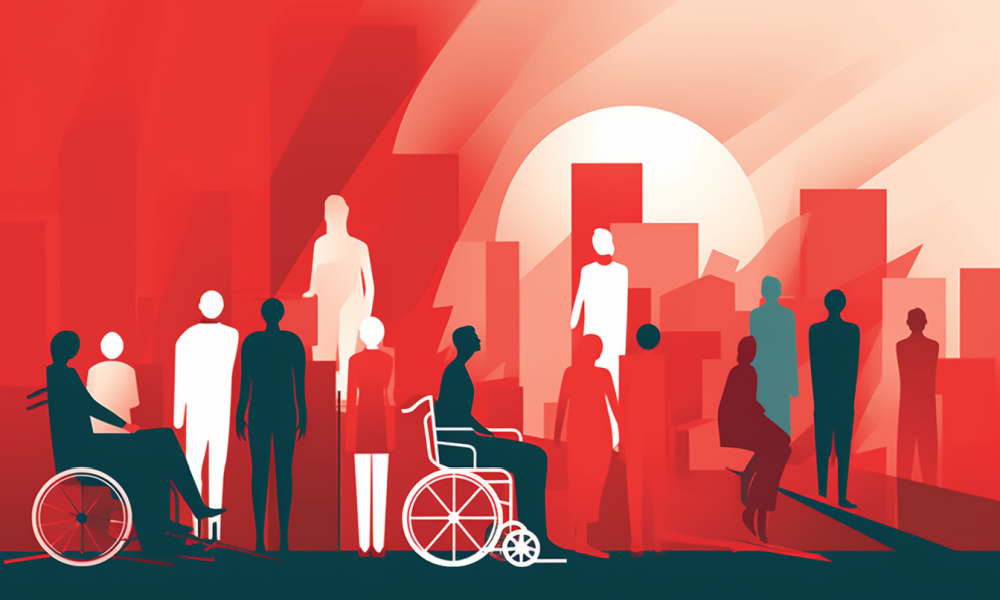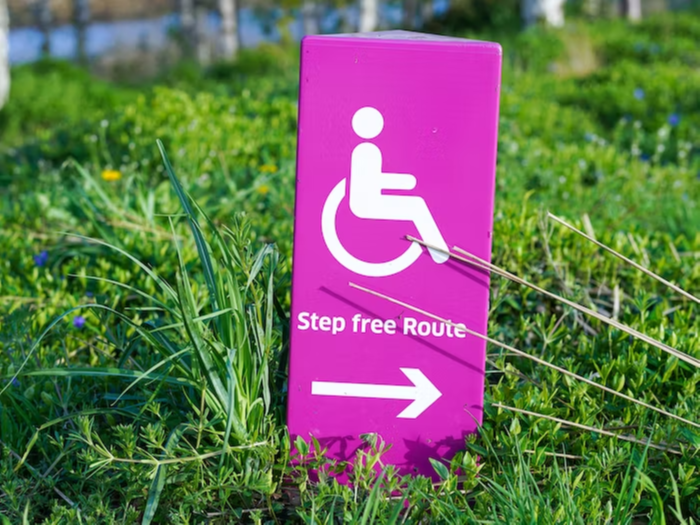Embracing accessibility to foster inclusion and boost your bottom line
- 6 Min Read
Accessibility is fundamental to inclusion. Find out from Tamara Makoni why this is, who the real beneficiaries of accessible products and services are, and what you can do today to make accessibility the default in your organization.
- Author: Tamara Makoni
- Date published: Jun 8, 2023
- Categories

‘My disability exists not because I use a wheelchair, but because the broader environment isn’t accessible.’
These are the words of comedian, journalist, and disability activist Stella Young. There have been significant developments around accessibility since her death in 2014, but inaccessibility remains the default in many ways. In 2018, over 90% of recruitment websites in the UK were inaccessible to people who rely on assistive technologies.
And still, in 2021, only 53% of web accessibility practitioners felt their own organization’s web products were accessible, down from 63% in 2018. We still have a long way to go. Here’s an open invitation to take stock of your organization’s approach to accessibility, and inspiration for how to create the right processes for you to create meaningful impact.
Preparation is the key to accessibility success
How can HR leaders translate awareness about accessibility into concrete actions that result in meaningful outcomes? I recommend:
- Making it a shared priority
- Providing clear guidance
- Planning for when accessibility needs arise
- Bridging the digital divide
Make accessibility a shared priority
Like inclusion, accessibility is everyone’s concern and responsibility – not just HR’s. But HR leaders are in a unique position to get the ball rolling and put accessibility on the map as a must for the organization:
- Secure input from all departments to help create the guidelines and checklists
- Increase awareness by inviting accessibility advocates to speak at staff and executive events
- Discuss accessibility during onboarding, and incorporate questions about it in engagement surveys and exit interviews
- Include training about accessibility in the learning curriculum and signpost employees to resources for further development
In this way, you can put the foundation in place to make accessibility the default within your organization and set the scene to translate awareness and good intentions into successful outcomes.
Provide clear guidance around accessibility
Just as your Comms colleagues have style guides to ensure all documents meet a set standard, accessibility guidelines are critical to inform employees how to create equitable on- and offline experiences. Checklists are particularly useful here. They empower employees to act while respecting the fact that they are often time-poor, juggling multiple priorities simultaneously.
Store your checklists in a central location to facilitate easy access. Make it a policy that event preparation cannot be considered complete until every point on the list is accounted for. Also, don’t forget to clearly signpost accessibility information on your website and other relevant materials for external stakeholders along with details of who to contact for more information or to make a request.
Plan for when accessibility needs arise, not if
An interview candidate informs you they will bring a service animal. Another one requests additional time to complete an assessment. How do you respond?
It’s important to know how you will handle access-related requests from employees or external parties. At the least, your plan should cover:
- Escalation points and who has ultimate responsibility for resolving requests
- Resolution time KPIs
- Which budget any equipment that is purchased to accommodate the request comes from
- How you will keep the requestor informed and at what stage(s)
Mapping out ‘what happens when’ enables you to identify and fix issues that prevent you from accommodating future requests. It also helps you avoid unnecessary delays that may lead to costly mistakes and customer dissatisfaction.
Bridge the digital divide
Is your organization one of the 97% worldwide that invests in content marketing to sell your values and services and attract top talent? Here are five key ways to make digital content more inclusive and effective:
- Use subtitles. These allow viewers with hearing impairments to engage with your content. There’s evidence they make it more likely that viewers watch the entire video.
- Keep the text concise and avoid jargon and flowery language. Make it easier for readers of all abilities to understand the text and pick out key messages.
- Avoid flashing content. At best, it can be irritating or frustrating. At worst, it can trigger nausea and even seizures.

- Capitalize each word in hashtags, like #AccessibilityMadeSimple. This makes phrases more readable and allows screen readers to accurately identify component words.
- Add alt text to describe an image’s function or appearance. Screen readers read this aloud for users with visual impairments, and the text also gets indexed by search engine bots, boosting your SEO (search engine optimization).
Ableism excludes and denies an uncomfortable reality
Ableism is prejudice and/or discrimination against people with known or perceived disabilities. An ableist society revolves around an assumption that people who access services and products do not have disabilities, centering their experience and treating the experiences of people with disabilities as a deviation from the norm. Sometimes solutions are put in place to enable the participation of people with disabilities (like enabling step-free access to subway platforms) but not always, demonstrating how exclusion and assumptions go hand in hand. As Stella Young emphasized, in our ableist society, service design is often the real barrier to access for people with disabilities, not their condition.
But why is ableism so prevalent? The World Health Organization estimates that one in six people worldwide live with some form of disability. In Europe, it’s one in four adults. And these numbers are set to rise dramatically in the years to come thanks to increases in chronic health conditions and demographic trends. The uncomfortable reality is that disability is not niche. All of us will experience disability in some form during our lives, temporary or permanent, due to aging, accidents, or illness. A 2022 study, for example, revealed that up to 1.35 billion young people are currently at risk of permanent hearing loss because of unsafe listening practices.
Accessibility benefits us all
In 1929 the course of cinema changed forever. Silence was out, sound was in. The era of the talkies (films with speech) had begun. While many viewers embraced this new approach, people with hearing difficulties suddenly found themselves excluded from the cinematic experience. Subtitles came to life to address this, with figures like deaf actor Emerson Romero leading the way in developing tools to display text for those who needed it. Today, the film industry has transformed subtitles from an experimental solution for a specific problem to a widely used tool that boosts user engagement regardless of hearing ability.
And it’s far from the only example. Electric toothbrushes, audiobooks, and bendable drinking straws are just some products originally developed to address specific disabilities that are now in mainstream use. Just as disability is a concern that affects us all, promoting accessibility creates tangible benefits for the many, not just the few.
________________
Tamara Makoni is an inclusion specialist who helps leaders embed inclusion into processes and systems to empower diverse talent. She works with clients across sectors as a speaker, facilitator and strategic advisor, and is founder and CEO of Kazuri Consulting.










